Gwent Review
Pros: Innovative and exciting game, hundreds of cards to collect, deck builder and card crafting, steeped with The Witcher lore
Cons: A few of the Special effects were very confusing
Score: TBD
We checked out CD Projekt Red’s new card collecting game (CCG) Gwent recently, originally a mini-game that could be played in their single player action RPG The Wither 3: Wild Hunt, where players were able to play the game against various NPC characters and earn new cards by completing quests. The mini-game was so popular with the fans that the developers finally created a standalone CCG, with The Witcher lore as inspiration for the cards and players controlling decks of the different key factions from the franchise. Playing for a few hours against the AI in their Challenge mode we got the chance to test the game for ourselves, see what it was about, and where it fit amongst the other CCGs in the genre.
There are, unexpectedly, plenty of familiar elements in Gwent that are seen in some of the other top CCGs that dominate the genre, such as building a deck from hundreds of unique cards with unique abilities/traits split between various factions, a fully manageable deck builder as well as card crafting, AI, ranked and unranked game modes, opening card packs (kegs in the case of Gwent) to earn new cards. These are, for the most part, staples of the CCG genre and almost a requirement for any new title entering the market to have, so Gwent has it covered in that regard, but in comparison to practically every other true CCG out there Gwent is one of a kind with the sheer originality of its gameplay and actual mechanics. Where other new titles take elements from existing titles and put “their own spin”, in general most CCGs play very similar; Gwent stands alone.
For starters the aim is not to “destroy your enemy’s hero/general/champion” or whatever you might call it, with a typical goal of fielding units to try and get passed the enemies defences and deal damage to a hero card (a la Hearthstone, Hex, Magic the Gathering, Might & Magic); your victory comes directly from the cards you play and keep on the field, with each card having a “Power” value, the aim is to have the highest power total to win a round, oh yes, Gwent is a best of three rounds, but we’ll get to that. Each card has primarily a power value and a special trait that determines what effects it will have when it is played from the hand, or when it is destroyed; unlike other CCGs once your card is played to the battlefield you generally don’t have much control over it unless some other card is played that can effect it, so there’s no “attacking” each round with your cards. The Special abilities are primarily to buff your played cards power score and reduce your opponents either by hindering them or killing off their played cards. The Specials come in all shapes and sizes, and a lot of the effects are similar to other CCGs in regards to the effects they have, though the wording on some of the specials was a little weird and didn’t make sense sometimes until we’d managed to play a few games and work out what it meant.
So, as with other CCGs you build your deck which is a minimum of 25 cards and a maximum of 40, they can be made up of 4 Gold cards, 6 Silver cards and then fleshed out with the rest as Bronze cards. The colour indicates a few things, primarily their strength with Gold being the strongest cards, they’re also invulnerable to being targeted by most Special effects from other cards, also with Gold and Silver you can only have one copy of that card in your deck, whereas you can have a few duplicates of the same card with Bronze cards. Outside of power score, rating and colour rank the final element is the unit type: Siege, Ranged or Melee, which indicates which of the three rows on the battlefield a card can be placed (with some cards that can be placed anywhere), whilst unlike other CCGs the cards at the front don’t necessarily block attacks from enemy cards (unlike Might and Magic: Duel of Champions) but positioning on rows does play an important part as we’ll explain below.
So with a handful of free starter decks from the 5 main factions already built we jumped into the game, the tutorial did a great job of giving us the basics but in all honesty the game is extremely simple to pick up. Focusing on the Monsters faction, which is all the beasts and monsters you’d find in The Witcher RPG, we jumped into the Challenges to face off against some AI opponents in the hopes of earning some resources and free cards, we decided to take on the Monster deck challenge so we could earn more Monster cards for our own deck.
The process is a turn based system, and you initially draw 10 cards from your deck into your hand as well as your decks Leader card (there are lots of leader cards, but this is essentially a guaranteed gold card you can play at any time). Each turn we got to place one card, which again is a pretty unique element, as there is no resource building and we could play the strongest card in our hand as soon as we liked, albeit there are so many one hit kill spell cards that this isn’t really an optimal strategy.
The cards you have in your hand, with some slight exceptions of a few cards that can summon other cards or call them from the graveyard, are pretty much the only cards you have for the entire three rounds. The first round is always an interesting one as we would have to work out our strategy for the entire game, when we didn’t feel like we could win the first round because the opponent fielded too many powerful units then we could forfeit the round and try to win the final two, hoping that they’d used up too many of their good cards early on. When heading into the second round you bring your remaining cards with you and draw an extra 2 from the deck, into round 3 then again you bring what cards you might have left and draw one more card; it’s a really interesting strategy element deciding which round to forfeit, or whether to try and win the first two rounds straight away.
Our battle against the Monsters was fun, but frustrating due to our final unique element: weather. Some cards were weather cards, or some units spawned weather effects, which were applied to a full row (this is why it’s important to not stack a single row too heavily with units). These can reduce units power temporarily, or keep reducing it until it kills them off (such as with Biting Frost) and some cards benefit from particular weather effects like the Foglings we had to keep facing for a challenge just grew stronger and stronger whilst fog was on the field. It’s a very cool mechanic and can really change the battlefield in an instant.
Overall we have to say we’re really pleased with how the game came out, whilst CD Projekt Red might have been trying something different that might not necessarily pay off (albeit knowing they already have a huge fan base that have literally asked for this game to be made probably eases off the pressure) the game is a pretty polished title in its own right and definitely brings innovation to the CCG genre. The game is very easy to pick up, but has enough cards that individual strategies are going to be interesting to witness as players really begin to get their hands on the game.
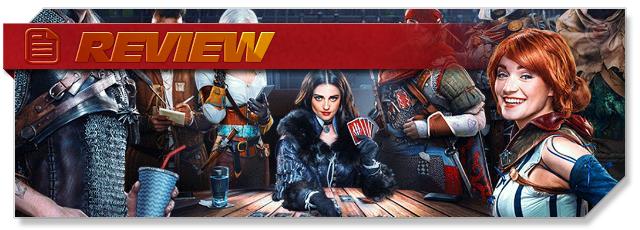
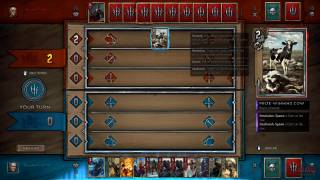
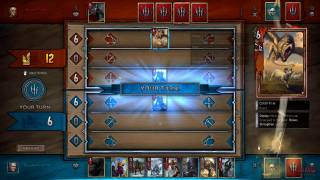
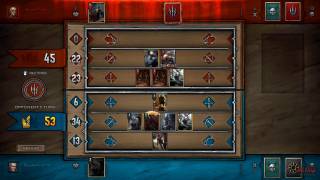
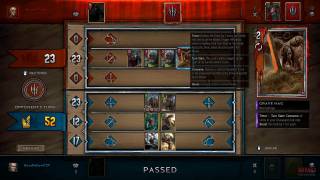
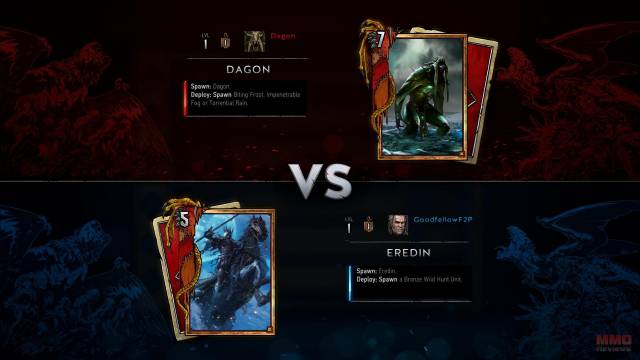
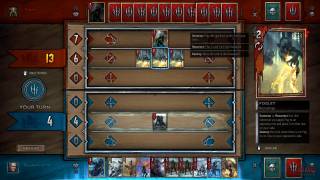
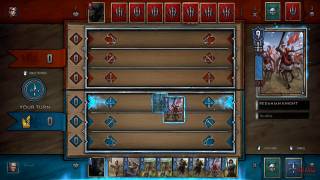
Deja tu comentario
You must be logged in to post a comment.